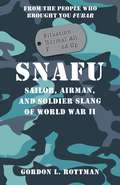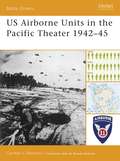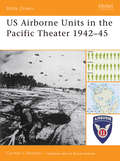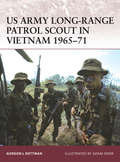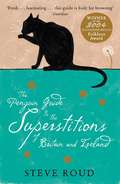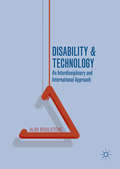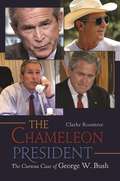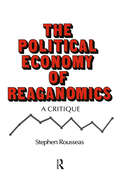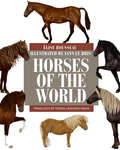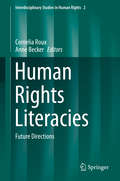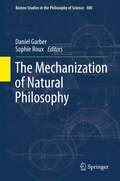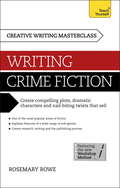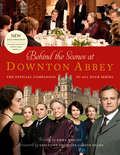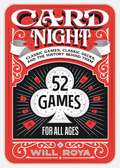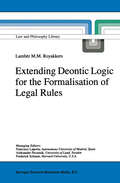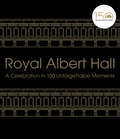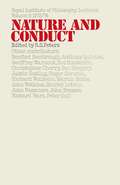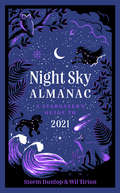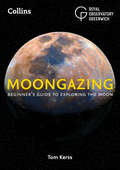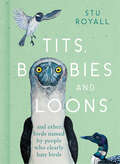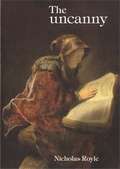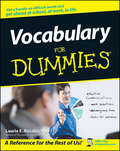- Table View
- List View
SNAFU Situation Normal All F***ed Up: Sailor, Airman, and Soldier Slang of World War II
by Gordon L. RottmanMilitary life has always been ruled by its own language, specific sets of terms and phrases that separate the serving man or woman from their civilian counterpart. There is the official version of ranks and acronyms, and the more unofficial, colloquial language of the barrack room and battlefield. This new title explores the language and slang of the major combatant powers, delving into their origins and explaining their uses. All of this will be illustrated with contemporary cartoons and other images showing the phrases in use. This title is designed specifically as a follow-up to 2007's FUBAR: Soldier Slang of World War II, and will differ from the original book in that it will cover the slang of sailors and airman, as well as soldiers. Detailed sections will be included for each of the major combatants of World War II, and additional appendices will detail the nicknames given to the major surface vessels and aircraft types of the war.
US Airborne Units in the Pacific Theater 1942–45 (Battle Orders)
by Gordon L. RottmanThis book examines the wide variety of airborne units that served in the Pacific Theater. Among the units covered are the 12,000-strong 11th Airborne Division; the elite 1st Special Service Force; the 503rd Parachute Infantry Regiment (Separate); and the 1st Marine Parachute Regiment. The nature of the enemy and the terrain in the PTO, and long distances that had to be covered, provided significant and diverse challenges to both Army and Marine Corps parachute units. Internal organization, weapons and equipment, command and control, training, combat missions, and combat operations including the 11th Division's fighting in the Philippines, and the 503rd PIR's legendary jump onto Corregidor and recapture of the island are all covered.
US Airborne Units in the Pacific Theater 1942–45 (Battle Orders #26)
by Gordon L. RottmanThis book examines the wide variety of airborne units that served in the Pacific Theater. Among the units covered are the 12,000-strong 11th Airborne Division; the elite 1st Special Service Force; the 503rd Parachute Infantry Regiment (Separate); and the 1st Marine Parachute Regiment. The nature of the enemy and the terrain in the PTO, and long distances that had to be covered, provided significant and diverse challenges to both Army and Marine Corps parachute units. Internal organization, weapons and equipment, command and control, training, combat missions, and combat operations including the 11th Division's fighting in the Philippines, and the 503rd PIR's legendary jump onto Corregidor and recapture of the island are all covered.
US Army Long-Range Patrol Scout in Vietnam 1965-71 (Warrior #132)
by Gordon L. Rottman Mr Adam HookThe Vietnamese knew the Long-Range Patrol Scouts as "the men with green faces,†? a reference to the camouflage paint that they used. Operating in patrols of four to six men these men were like ghosts – scouting far behind enemy lines. This book examines the Long-Range Patrol Scout's superior stealth movement techniques, camouflage and concealment, tracking, counter-tracking, observation, and other fieldcraft skills. It also examines the occasions they participated in small-scale direct actions including ambushes and raids. Written by a Special Forces' Vietnam veteran, this book not only depicts the remarkable lives of these scouts when on campaign, but also details the training and conditioning that it took to become one of these shadow warriors.
The Penguin Guide to the Superstitions of Britain and Ireland
by Steve RoudAre black cats lucky or unlucky? What should you do when you hear the first cuckoo? Since when have people believed that it's unlucky to shoot an albatross? Why does breaking a mirror lead to misfortune? This fascinating collection answers these and many other questions about the world of superstitions and forms an endlessly browsable guide to a subject that continues to obsess and intrigue.
Sweet Treats around the World: An Encyclopedia of Food and Culture
by Timothy G. Roufs Kathleen Smyth RoufsFrom apple pie to baklava, cannoli to gulab jamun, sweet treats have universal appeal in countries around the world. This encyclopedia provides a comprehensive look at global dessert culture.Few things represent a culture as well as food. Because sweets are universal foods, they are the perfect basis for a comparative study of the intersection of history, geography, social class, religion, politics, and other key aspects of life. With that in mind, this encyclopedia surveys nearly 100 countries, examining their characteristic sweet treats from an anthropological perspective. It offers historical context on what sweets are popular where and why and emphasizes the cross-cultural insights those sweets present. The reference opens with an overview of general trends in desserts and sweet treats. Entries organized by country and region describe cultural attributes of local desserts, how and when sweets are enjoyed, and any ingredients that are iconic. Several popular desserts are discussed within each entry including information on their history, their importance, and regional/cultural variations on preparation. An appendix of recipes provides instructions on how to make many of the dishes, whether for school projects or general entertaining.
Sweet Treats around the World: An Encyclopedia of Food and Culture
by Timothy G. Roufs Kathleen Smyth RoufsFrom apple pie to baklava, cannoli to gulab jamun, sweet treats have universal appeal in countries around the world. This encyclopedia provides a comprehensive look at global dessert culture.Few things represent a culture as well as food. Because sweets are universal foods, they are the perfect basis for a comparative study of the intersection of history, geography, social class, religion, politics, and other key aspects of life. With that in mind, this encyclopedia surveys nearly 100 countries, examining their characteristic sweet treats from an anthropological perspective. It offers historical context on what sweets are popular where and why and emphasizes the cross-cultural insights those sweets present. The reference opens with an overview of general trends in desserts and sweet treats. Entries organized by country and region describe cultural attributes of local desserts, how and when sweets are enjoyed, and any ingredients that are iconic. Several popular desserts are discussed within each entry including information on their history, their importance, and regional/cultural variations on preparation. An appendix of recipes provides instructions on how to make many of the dishes, whether for school projects or general entertaining.
Disability and Technology: An Interdisciplinary and International Approach
by Alan RoulstoneThis book brings together formally disparate literatures and debates on disability and technology in a way that captures the complex interplay between the two. Drawing on disability studies, technology studies and clinical studies, the book argues that interdisciplinary insights together provide a more nuanced and less stylized picture of the benefits and barriers in disability and technology.Drawing on a breadth of empirical studies from across the globe, a picture emerges of the complex and multi-directional interplay of technology and disability. Technology is neither inherently enabling or disabling but fundamentally shaped by the social dynamics that shape their design, use and impact.
The Chameleon President: The Curious Case of George W. Bush
by Clarke RountreeThis book paints 11 different portraits of the many "faces" of President George W. Bush, arguably the most controversial and fascinating modern American president, revealing the malleability of human motives and of Bush's motives in particular.George W. Bush's presidency was marred by some of the worst events in modern U.S. history: the biggest financial crisis since the Great Depression, the events of September 11, 2001; the quagmire of the war in Iraq; widespread fear of terrorism; Hurricane Katrina and the government's delayed, inefficient response; and the Patriot Act, which greatly increased the government's ability to access citizens' private information. Which of Bush's characteristics, influences, or internal motivations were most responsible for this polarizing President's attitudes and decisions?This book presents 11 competing views of President George W. Bush. The Chameleon President: The Curious Case of George W. Bush does not endorse a particular view of Bush; it is up to the reader to decide which portrayal best explains the 43rd president's surprisingly complex character as well as his political legacy. The author synthesizes popular claims from various sources to provide possible explanations for Bush's seemingly contradictory characteristics. Examples of the influences considered include his intelligence, immaturity, and religious beliefs; his upbringing in West Texas; his misfortune to have been in charge during a terrorist attack and a rare natural disaster; his vice president; and his unstated agendas—political, business, and family-driven.
Political Economy of Reaganomics: A Critique (Routledge Revivals Ser.)
by Stephen RousseasAccording to Stephen Rousseas, economics cannot be separated from politics. Here, he provides theoretical background and insight into the ideology of supply-side economics, commonly referred to as Reaganomics. As a Post Keynesian, Rousseas is critical of supply-side economics and the Reagan administration's attempt to counter-revolutionise the demand-side economics of the earlier twentieth century. Originally published in 1982, this title is ideal for students of Economics and Politics, as well as the general reader interested in the subject.
Political Economy of Reaganomics
by Stephen RousseasAccording to Stephen Rousseas, economics cannot be separated from politics. Here, he provides theoretical background and insight into the ideology of supply-side economics, commonly referred to as Reaganomics. As a Post Keynesian, Rousseas is critical of supply-side economics and the Reagan administration's attempt to counter-revolutionise the demand-side economics of the earlier twentieth century. Originally published in 1982, this title is ideal for students of Economics and Politics, as well as the general reader interested in the subject.
Horses of the World
by Élise Rousseau Yann Le Bris Teresa Lavender FaganA beautifully illustrated and detailed guide to the world's horsesHorses of the World is a comprehensive, large-format overview of 570 breeds of domestic and extant wild horses, including hybrids between the two and between domestic breeds and other equids, such as zebras. This beautifully illustrated and detailed guide covers the origins of modern horses, anatomy and physiology, variation in breeds, and modern equestrian practices. The treatment of breeds is organized by country within broader geographical regions—from Eurasia through Australasia and to the Americas. Each account provides measurements (weight and height), distribution, origins and history, character and attributes, uses, and current status. Every breed is accompanied by superb color drawings—600 in total—and color photographs can be found throughout the book.Describing and depicting every horse breed in existence, Horses of the World will be treasured by all who are interested in these gorgeous animals.A unique large-format, field-guide approach that provides complete coverage of the world's 570 horse breeds600 superb color illustrations showcasing every breedAdditional color photos and maps Accessible text offers detailed information on each breed, including measurements, distribution, origins and history, character and attributes, uses, and current status
Human Rights Literacies: Future Directions (Interdisciplinary Studies in Human Rights #2)
by Cornelia Roux Anne BeckerThis book adds impetus to the nexus between human rights, human rights education and material reality. The dissonance between these aspects is of growing concern for most human rights educators in various social contexts. The first part of the book opens up new discourses and presents new ontologies and epistemologies from scholars in human rights, human rights education and human rights literacies to critique and/or justify the understandings of human rights’ complex applications. Today’s rapidly changing social contexts and new languages attempting to understand ongoing dehumanization and violations, put enormous pressure on higher education, educators, individuals working in social sciences, policy makers and scholars engaged in curricula making.The second part demonstrates how global interactions between citizens from different countries with diverse understandings of human rights (from developed and developing democracies) question the link between human rights and it’s in(ex)clusive Western philosophies. Continuing inhumane actions around the globe reflect the failure of human rights law and human rights education in schools, higher education and society at large. The book shows that human rights education is no longer a blueprint for understanding human rights and its universal or contextual values presented for multicomplexial societies. The final chapters argue for new ontologies and epistemologies of human rights, human rights education and human rights literacies to open-up difficult conversations and to give space to dissonant and disruptive discourses. The many opportunities for human rights education and literacies lies in these conversations.
The Mechanization of Natural Philosophy (Boston Studies in the Philosophy and History of Science #300)
by Sophie RouxThe Mechanisation of Natural Philosophy is devoted to various aspects of the transformation of natural philosophy during the 16th and 17th centuries that is usually described as mechanical philosophy .Drawing the border between the old Aristotelianism and the « new » mechanical philosophy faces historians with a delicate task, if not an impossible mission. There were many natural philosophers who actually crossed the border between the two worlds, and, inside each of these worlds, there was a vast spectrum of doctrines, arguments and intellectual practices. The expression mechanical philosophy is burdened with ambiguities. It may refer to at least three different enterprises: a description of nature in mathematical terms; the comparison of natural phenomena to existing or imaginary machines; the use in natural philosophy of mechanical analogies, i.e. analogies conceived in terms of matter and motion alone.However mechanical philosophy is defined, its ambition was greater than its real successes. There were few mathematisations of phenomena. The machines of mechanical philosophers were not only imaginary, but had little to do with the machines of mecanicians. In most of the natural sciences, analogies in terms of matter and motion alone failed to provide satisfactory accounts of phenomena.By the same authors: Mechanics and Natural Philosophy before the Scientific Revolution (Boston Studies in the Philosophy of Science 254).
Masterclass: How to create compelling plots, dramatic characters and nail biting twists in crime and detective fiction
by Rosemary RoweDo you have an idea for a gripping crime novel?Would you like to know how to plot your book flawlessly?Do you want to create beautifully crafted characters and nail biting twists?This book is designed for anyone who wants to write an unputdownable crime novel. Whatever your subgenre, whether Scandi-crime or detective 'cosies', this book is full of inspirational advice, acute insights and practical exercises. The first part of the book establishes the rules of writing crime fiction - from convincing characters to the role of research. The book then covers the practical craft of writing and editing, before explaining in detail how to secure a contract and/or self-publish your work. A comprehensive guide for anyone who wants to be the next Val McDermid or Ian Rankin.
Behind the Scenes at Downton Abbey: The Official Companion To All Four Series
by Emma RowleyA revealing look backstage at the hit TV show Downton Abbey. In-depth interviews give an exclusive insight into the actors’ experiences on set as well as the celebrated creative team behind the award-winning drama.
Card Night: Classic Games, Classic Decks, and The History Behind Them
by Will RoyaLearn when to hold 'em and when to fold 'em with Card Night, a collection of 52 classic card games, including rules and strategies. Featuring step-by-step, illustrated instructions, and two indexes that organize each game by difficulty and number of players needed, Card Night includes directions for playing all the most popular card games, including Hearts and Bridge, Rummy and Go Fish. In addition to providing the rules of standard game play, Card Night also details the fascinating stories and peculiarities behind some of the world's most famous card decks, some of which were used as currency, tools for propaganda, and even as a means for sending coded messages. Offering one game for each week of the year, Card Night is the go-to companion for weekly game nights, long car rides, and rainy days spent at home. Wow your friends and family with your game playing prowess and keep them entertained with fascinating details from playing card history.
Extending Deontic Logic for the Formalisation of Legal Rules (Law and Philosophy Library #36)
by L.L. RoyakkersRoyal Albert Hall: A celebration in 150 unforgettable moments
by Royal Albert HallThe most iconic concert hall in the world celebrates 150 years with a stunning review of history's finest performances and performers. Opening with a personal letter from Queen Elizabeth II, this beautiful book celebrates 150 moments that have shaped The Royal Albert Hall over the last century and a half. From The Beatles to the Suffragettes, Albert Einstein to Winston Churchill, Mohammed Ali to B.B. King, few other buildings have housed such a stunning variety of era-defining people and events.This gorgeous, illustrated guide takes you behind the scenes of one of the most well-loved concert halls in the world, offering insights into the building’s iconic architecture, as well as its lesser-known quirks such as the reinforced toilets designed for Sumo wrestlers. This book features events ranging from the world's first sci-fi convention in 1891 to the annual Cirque du Soleil, which requires the auditorium to be transformed into a gymnasium. Autographs and candid comments from incredible performers who have appeared on its stage, like Russell Howard, Eric Clapton and Katie Derham, give a unique insider’s perspective on an esteemed and beloved British institution. With never-before-seen images, insights and more, this is the ultimate celebration of a British architectural icon which continues to inspire artists and audiences from around the world.
Night Sky Almanac 2021: A Stargazer's Guide
by Royal Observatory Greenwich Storm Dunlop Wil TirionThe perfect gift for amateur and seasoned astronomers. Follow the progress of constellations throughout the seasons with this beautiful companion to the night sky from Astronomy experts Collins.
Moongazing: Beginner's Guide To Exploring The Moon
by Royal Observatory Greenwich Tom KerssAn in-depth guide for aspiring astronomers and Moon observers. Includes detailed Moon maps and covers the history of lunar observation and exploration, the properties of the Moon, its origin and orbit. Optimised for colour tablets, the images in this ebook are not best-suited for viewing on black and white devices.
Tits, Boobies and Loons: And Others Birds Named By People Who Clearly Hate Birds
by Stu RoyallFrom the monotonous lark to the rough-faced shag, these poor birds have us all asking: ARE ORNITHOLOGISTS OK?
The Uncanny (PDF)
by Nicholas RoyleThis is the first book-length study of the uncanny, an important topic for contemporary thinking on literature, film, philosophy, psychoanalysis, feminism and queer history.
Vocabulary For Dummies (For Dummies Ser.)
by Laurie E. RozakisSomeone just called you captious. Should you be flattered? Considering your extreme lactose intolerance, is it a good idea to order veau au béchamel from a French menu? Calumny is to slander as obloquy is to a) flattery, b) sermon, or c) invective? You’ve just heard that your new boss is a real martinet, should you be worried or excited about an attractive new addition to your workplace? Your boyfriend says you have no élan, is he telling you you’re all out of yogurt? Starting to wish you’d paid more attention in English class? Don’t worry, it’s never too late to develop a million dollar vocabulary—and Vocabulary For Dummies offers you a fast, fun and easy way to do it. Whether you’re facing standardized tests, or you want to feel more knowledgeable at work or more comfortable in social situations, this book is for you. In no time you’ll: Dramatically expand your vocabulary Speak with style Write with panache Make a better impression a work or school Dine out with confidence Have the right words for formal occasions and ethnic events Get more out of what you read Vocabulary For Dummies doesn’t overwhelm you with endless word lists. Instead, it gives you a complete vocabulary-building program that familiarizes you with words from all areas of life as they’re used in context—from bar mitzvahs to business meetings, PCs to politics—with a host of fun features, including: Word tables organized by common features, such as language of origin, professional or social contexts, similarities, and more Sample conversations incorporate new terms and define related ones Before-and-After examples show how to replace old, general terms with new specific vocabulary Pointers reinforce understanding with examples of correct and incorrect usage Chapters on terms from finance, law, medicine, eating and shopping, history and mythology, various languages, and more Vocabulary For Dummies makes it easier than ever for you to get a handle on difficult words and get ahead at school, at work, and in life.
